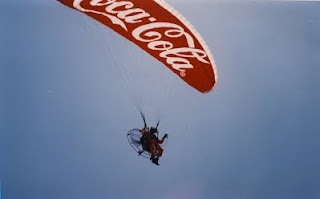click here to evaluate
Online
It has very large structured medium
of advertisements. These types of advertisements we can see on the roads or
public places.
It is generally vehicle mounted bill board or digital screens. In this system this can be button a vehicle so that vehicle can carry it where ever it goes.
Smt.
S.B. Gardi Department of English
Assignments
Ø Name:-
Rathod Neha R.
Ø Class:-
M.A. Sem-4
Ø Roll
No:- 28
Ø Year:-
2016-2017
Ø Paper
No:- 15
Ø Topic:-
Types of Advertisement
What is advertising?
According to Angela Goddard the term
advertisement and advertising have, at their root, a Latin word, “advertere”,
meaning turn towards ‘. She goes on and defines the word advertising by stating
that it is a discourse which contributes to the construction of our identities;
it is also an act of communication.
Advertising is often an index of
attitudes because, in order for an advert to work, it must tap into some
thinking “out there” in the marketplace, but it would be a mistake to think
that adverts are a simple reflection of who we all are, in some natural way.
Advertising, as a very public form of discourse, is also part of the way we
construct our ideas about the world around us: what people are like, who does
what, who is important and why, what we should be worried about, and so on.
The
first advertising agency, which was set up by Volney Palmer in Boston in 1841,
introduced system to the business by offering a discount of 25% on ad space in
newspapers. This move marked the formal beginning of space selling. Initially,
most ad agencies were nothing more than brokers for ad space in newspapers.
Advertisers created their own ads. N.M. Ayer and Son became the first
full-service agency in 1869. One of the earliest highly successful advertising
campaigns was launched by Pears Soap. In late 19th century,
Thomas Barratt, whom many consider the father of modern advertising, launched a
series of ads featuring children, animals, flowers, and beautiful woman to
promote the company’s products.
Types of Advertising:-
Press
I It is a kind of printed advertising
such as a newspaper, magazine etc.
l
Television
Television
T This is very effective medium for
advertising & marketing format. This is reflected by the high prices
television networks charges for commercial airtime during popular events. It is
related with many regular programs related with audience.
Pamphlets
This is also type of advertising.
These types of pamphlets are very handy for advertising different products. We
can see these pamphlets with newspaper.
Online
It is connected with internet. Its
purpose is to deliver marketing message to attract customers. We can see many
this kind of advertisements while doing online activities.
Billboard advertisement
Street advertisements
Te
This is first come for street
service. First in UK it took place. This types of advertisements is placed
outsides of malls of near the bus stops.
Mobile Billboard
It is generally vehicle mounted bill board or digital screens. In this system this can be button a vehicle so that vehicle can carry it where ever it goes.
Aerial advertisements
This type of advertising is using
aircraft, balloons or airships. It is also called sky writing.
Conclusion
These way different types of
advertising are very useful for selling products with different ideas in
society. Through this they can attracts costumers and increase their sellings.
**************














